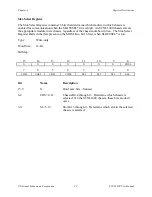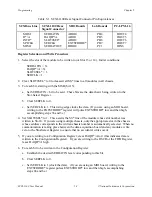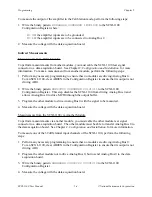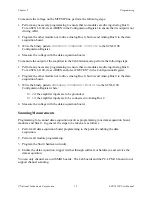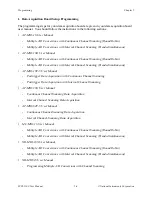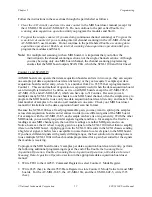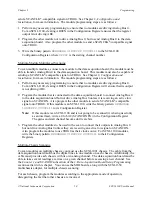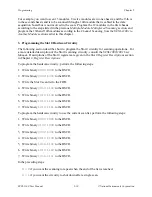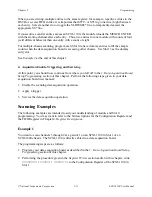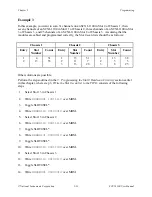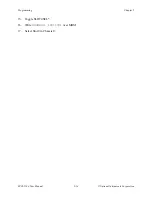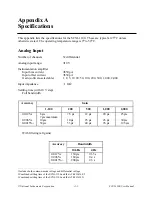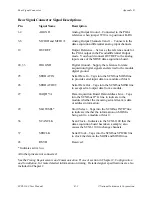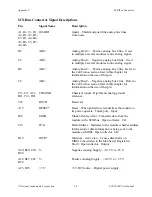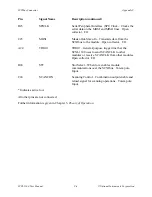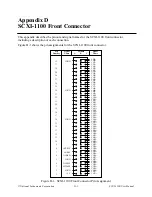
Chapter 5
Programming
© National Instruments Corporation
5-11
SCXI-1100 User Manual
When you are writing multiple entries to the same register–for example, repetitive writes to the
HSCR or several FIFO entries–it is important that SS*13 or SS*14 go inactive (high) between
each entry. Select another slot or toggle the SLOT0SEL* line to temporarily deassert the
appropriate SS* line.
If consecutive scan list entries access an SCXI-1100, the module reloads the MUXCOUNTER
with the starting channel after each entry. Thus, two entries for one module with counts of four
yield different behavior than one entry with a count of eight.
For multiple-chassis scanning, program each Slot 0 to have dummy entries to fill the sample
counts when the data acquisition board is accessing other chassis. Use Slot 13 as the dummy
entry slot.
See Example 3 at the end of this chapter.
4. Acquisition Enable, Triggering, and Servicing
At this point, you should now continue from where you left off in the 1. Data Acquisition Board
Setup Programming section of this chapter. Perform the following steps given in your data
acquisition board user manual:
1. Enable the scanning data acquisition operation.
2. Apply a trigger.
3. Service the data acquisition operation.
Scanning Examples
The following examples are intended to aid your understanding of module and Slot 0
programming. You may want to refer to the bit descriptions for the Configuration Register and
the FIFO Register in Chapter 4, Register Descriptions.
Example 1
You want to scan channels 3 through 9 at a gain of 1 on an SCXI-1100 in Slot 1 of an
SCXI-1000 chassis. The SCXI-1100 is directly cabled to a data acquisition board.
The programming steps are as follows:
1. Program your data acquisition board as described in the 1. Data Acquisition Board Setup
Programming section of this chapter.
2. Performing the procedure given in the Register Writes section earlier in this chapter, write
00000000 10000011 00000101
to the Configuration Register of the SCXI-1100 in
Slot 1.


